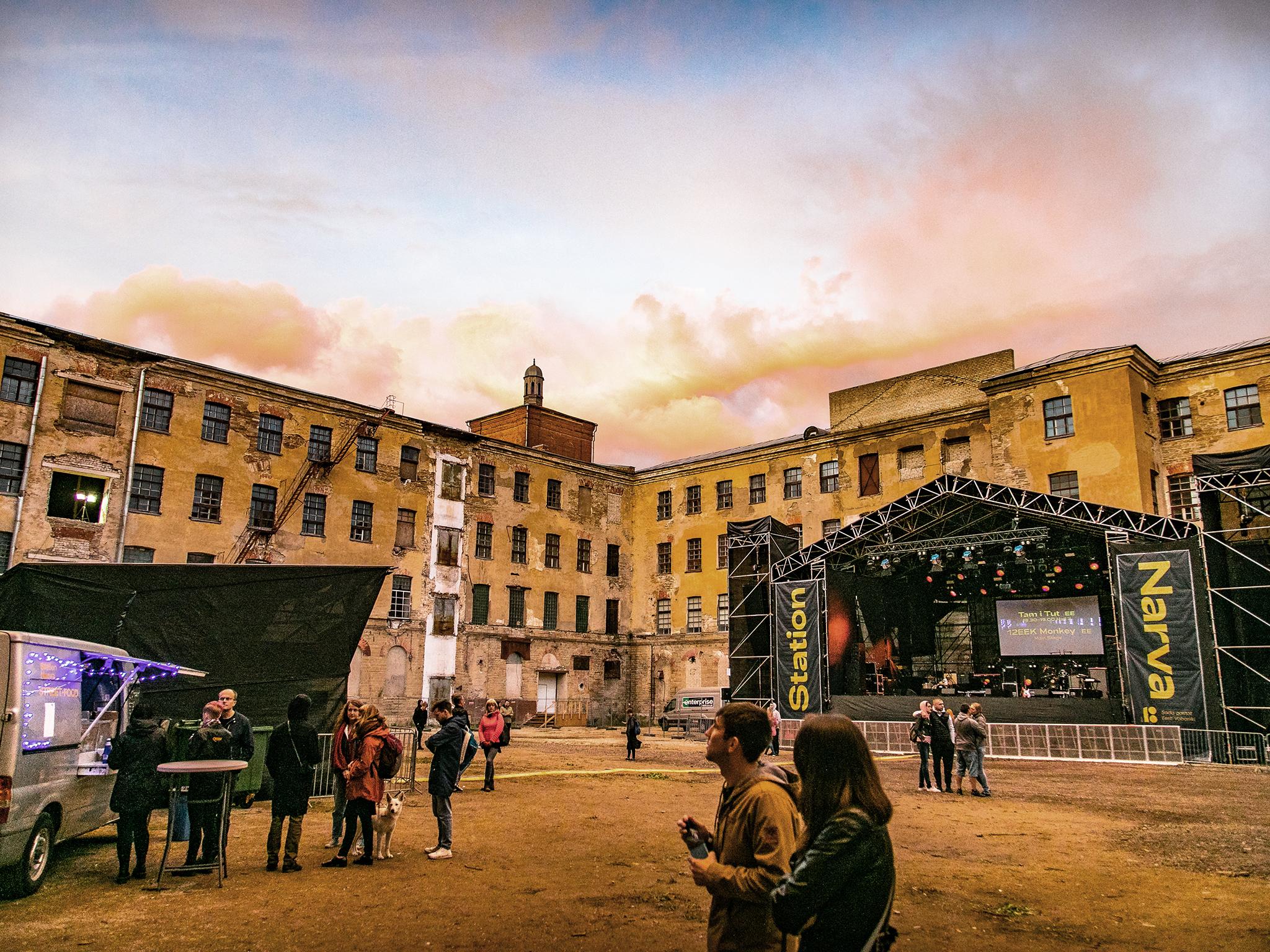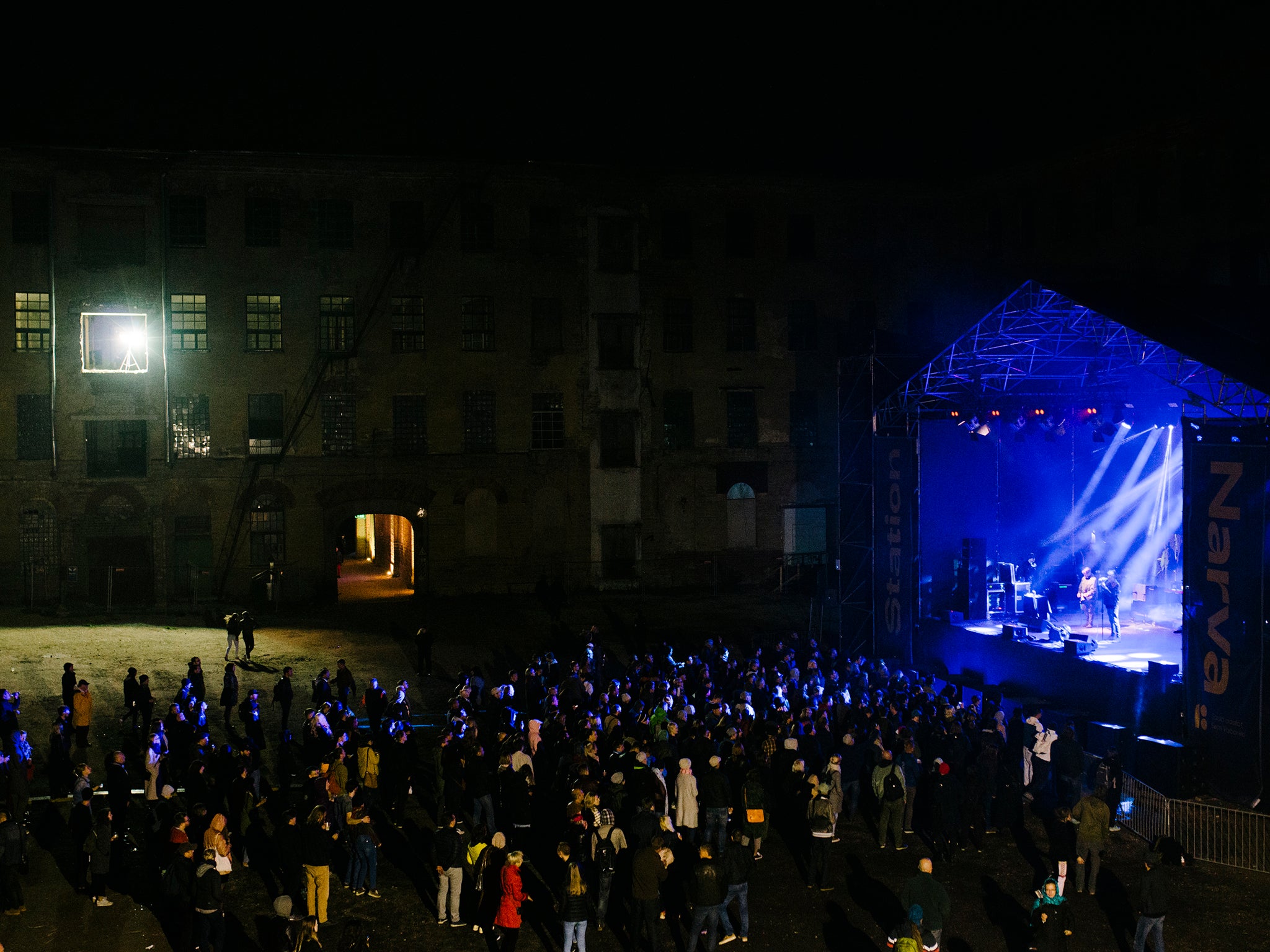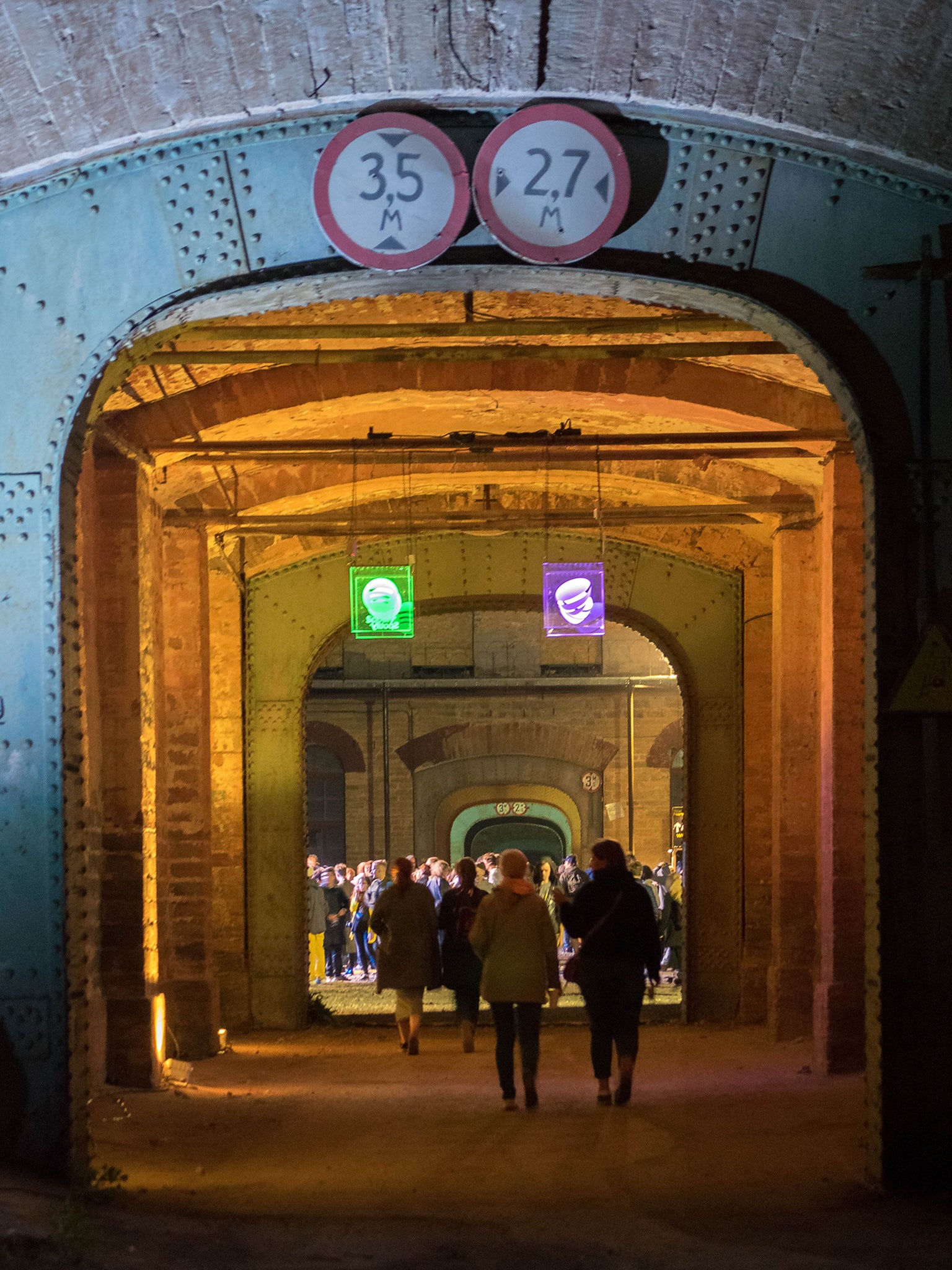Estonia is using alternative music to challenge Russian propaganda
The former eastern bloc nation is lavishing money on the arts in border regions susceptible to Russian influence, writes Carmen Gray

The conversion of factories into cultural venues rarely raises eyebrows these days, but the Kreenholm complex here is not just any relic of industry. Once the world’s largest cotton mill and a poster child of Soviet might, it stands on the island Narva in a river that now makes up the European Union’s eastern border. Russia is just a stone’s throw away, leaving Narva – where nearly 90 per cent of the population is ethnic Russian – caught between two worlds.
Kreenholm’s imposing atmosphere appealed to Jarmo Reha, 27, a theater director from Tallinn, the Estonian capital. He recently commandeered the site for his production Oomen, which saluted the ghosts of industry with actors hammering on iron while the Narva Boy’s Choir sang the socialist anthem “The Internationale”.
The performance was well received by visiting critics, but Reha says some condemned the use of Kreenholm as “blasphemy”. The factory’s former workers complained that events were being imported from the capital, yet no one was reaching out to the local population. Thousands in the city lost their jobs after the mill was privatized, and it closed for good in 2010. “It’s an open wound,” Reha adds.
It’s the kind of tension that Narva is becoming accustomed to as it becomes the latest front in a simmering culture war in the former Soviet bloc. Estonia is lavishing money and attention on Narva to attract investment to the city, fearing that its neglected Russian minority is prone to Kremlin influence.
The arts are central to the strategy. Kreenholm hosted the inaugural edition of Station Narva, an alternative music festival, this autumn. A cultural programme funded by the ministry of culture has also been established there, bringing in artists and exhibitions. Vaba Lava Narva, a theatre in a former military factory, opened in December. A campaign is underway to make Narva one of the European Union’s capitals of culture in 2024.
Helen Sildna, who is leading the campaign, said that there was a “soft power” dimension to the cultural initiatives. “From a defence perspective, building a happy, prosperous community in our border area is crucial,” she said. “But from a human perspective, it’s the decent thing to do anyway.”
After years as a Soviet satellite, Estonia, a nation of just 1.3 million people, is anxious to safeguard its language and identity – and that has meant a residual suspicion of its Russian-speaking minority. Narva’s street signs are in Estonian, a language that is related to Finnish and uses a Latin script; many locals, especially older people, don’t speak it. They get their news and entertainment mostly from Kremlin-backed television channels. The radio airwaves are awash with mainstream Russian pop.

Until recently, Narva was stigmatised as a hotbed of crime and opioid addiction, closer not only in distance but also in mentality to Russia. The rest of Estonia stayed away.
But Russia’s annexation of Crimea in 2014 was “like a bell ringing that woke people in Estonia up,” said Jaanus Mikk, the chief executive of Narva Gate, a property developer renovating Kreenholm. “Politicians started to think about Narva, and it helped the city a lot – more funds and projects came in.”
Donbass, Ukraine, is another region with a large ethnic Russian population that is suffering from the collapse of industry. After Crimea’s annexation, pro-Russia demonstrations in Donbass escalated into armed conflict between separatists and the Ukrainian government. Parallels between Donbass and Estonia’s northeast have many in the Baltics worried.

Sergei Stepanov, a journalist at ETV Plus, a Russian-language Estonian channel, said that people in Narva mainly watched networks broadcast from across the border that carry what he described as fake news. “People in Narva are influenced by these channels’ constant misinformation about Ukraine,” he said.
The Estonian president, Kersti Kaljulaid, said in an interview in November that the people of Narva “watch Russian TV channels and we all know there is no free media in Russia – the news is basically propaganda.” But, she added, “we do not respond by restricting their access or producing anti-propaganda, because the trouble with anti-propaganda is it’s still propaganda.”
Instead, funding from Estonia’s government is flowing to events like Station Narva, which brought around 3,000 people to Kreenholm and its surroundings. The headliner was the British post-punk band Echo and the Bunnymen, and the lineup also featured popular acts from Estonia and Russia, including Mart Avi, a rising star of a new “weird wave” of innovative Estonian pop music, and Shortparis, a flamboyant dark electro band from St Petersburg.
Roman Boiko, who runs Art Club Ro-Ro, a bar and music venue in Narva, said that while some welcomed the government’s investment in culture, “people here are still suspicious”.
Ro-Ro, a DIY setup of surrealist artwork and anything-goes carpentry, is the only place in the city to hear more alternative music year-round. “All the attention Narva is getting, and that more people are coming here, feels very good,” Boiko says. “It’s really important for people here to start believing that there is an interest in them, and even in solutions to their problems.”
The funding and support for the arts in Narva also benefit a new generation of Estonian artists who have a more open attitude to collaborating with Russians. The singer Mart Avi, a 27-year-old praised for his startling baritone voice and Bowie-esque stage presence, was among the performers at Station Narva. He said in a recent interview in Tallinn that the festival “was a big thing – it was rather unusual for something like that to happen there”.
He said he believed artists should work together to cut through Estonia’s identity divides. “It’s super easy for me to find a common language with Russians,” he said. “It’s not about territory. If you can find a common area of interest, then all is well.”
Avi says he did not have the “chip on the shoulder” about Russia like many Estonians who lived through Soviet times. “I’m saved by the fact that I’m the first generation to be born in free Estonia,” he says.
Reha, the theatre director who is also of that generation, said Estonia needed “empathy” not “tribalism”.
“When I was in Narva, I stopped calling the locals Russians,” he says. “I started calling them ‘our Russians’. Why should we leave them cut off? They are a part of us.”
Join our commenting forum
Join thought-provoking conversations, follow other Independent readers and see their replies
Comments